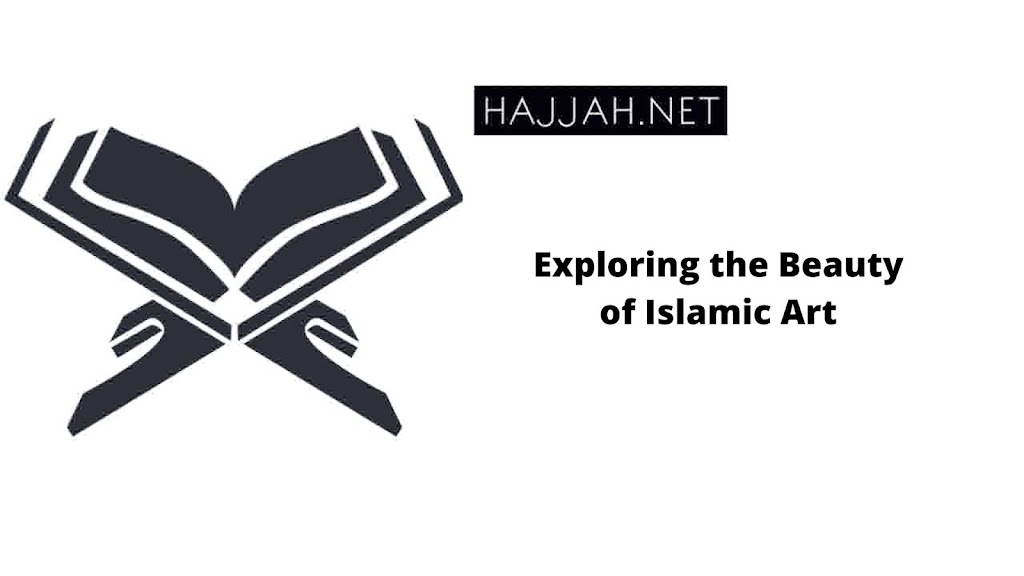Exploring the Beauty of Islamic Art – Islamic art is renowned for its exquisite beauty, intricate designs, and rich cultural significance. Spanning over a millennium, it encompasses a diverse range of artistic expressions from various regions influenced by the Islamic faith. From calligraphy and geometric patterns to architecture and textiles, Islamic art showcases the creativity and devotion of its practitioners. In this article, we will delve into the mesmerizing world of Islamic art, exploring its history, key characteristics, and enduring appeal.
Islamic Art: A Brief Overview
Islamic art refers to the artistic traditions that emerged in regions influenced by the Islamic faith, which originated in the 7th century CE with the teachings of Prophet Muhammad. This art form encompasses a wide range of mediums, including calligraphy, geometric patterns, architecture, paintings, textiles, metalwork, and ceramics. With its roots deeply embedded in Islamic beliefs, the art reflects the spiritual and cultural values of Muslim societies across the world.
The Influence of Islamic Beliefs on Artistic Expression
Islamic art is deeply intertwined with the principles and teachings of Islam. It is characterized by the absence of human and animal figures, as the religion encourages aniconism, the avoidance of creating images that may be worshipped as idols. Instead, Islamic art focuses on abstract, geometric, and floral designs, as well as the elaborate use of calligraphy to convey the beauty of the written word.
Calligraphy: The Art of Beautiful Writing
One of the most prominent features of Islamic art is calligraphy, which holds a special place due to the significance of the written word in Islam. Arabic calligraphy, with its flowing lines and intricate compositions, adorns mosques, manuscripts, and various decorative objects. The calligraphic script is not only aesthetically pleasing but also holds profound spiritual meaning, as it often represents verses from the Quran or poetic expressions of devotion.
Geometry and Patterns: Symmetry and Harmony
Geometry and intricate patterns are integral to Islamic art. Islamic artists excel in creating mesmerizing geometric designs that showcase perfect symmetry and harmony. These patterns, such as the famous arabesque and the tessellations of stars and polygons, can be found in architecture, tiles, and even textiles. The precise execution of these designs reflects the Islamic belief in the divine order and the interconnection between the physical and spiritual worlds.
Architecture: Magnificent Structures and Spaces
Islamic architecture is renowned for its grandeur and innovation. From the awe-inspiring domes and minarets of mosques to the intricate courtyards and ornate palaces, Islamic architecture is a testament to the ingenuity of its builders. The harmonious blend of geometric patterns, calligraphy, and decorative elements creates breathtaking spaces that inspire awe and reverence.
Miniature Paintings: Capturing Stories and Imagery
Miniature paintings, characterized by their intricate details and vibrant colors, flourished in Islamic art during the medieval period. These small-scale artworks depicted scenes from daily life, historical events, and religious narratives. The delicate brushwork and meticulous attention to detail showcased the skill and creativity of the artists.
Textiles and Carpets: Weaving Cultural Narratives
Textiles and carpets hold a special place in Islamic art, showcasing the mastery of weaving techniques and the intricate beauty of patterns. From luxurious silk fabrics adorned with calligraphy to intricately woven carpets, these textiles reflect the cultural narratives and regional influences of the diverse Islamic world.
Metalwork and Ceramics: Functional Beauty
Islamic art encompasses exceptional metalwork and ceramics, where both functionality and beauty merge seamlessly. Metalworkers and potters produced exquisite objects such as ornate metal lamps, delicate jewelry, and intricately glazed ceramic tiles. These objects not only served utilitarian purposes but also showcased the skill and creativity of the craftsmen.
The Role of Islamic Art in Mosques and Religious Spaces
Islamic art finds its most significant expression in mosques and religious spaces. The intricate calligraphy, geometric patterns, and architectural elements create an ambiance that enhances spiritual contemplation and devotion. The artistry within these spaces serves as a visual representation of the sacredness and beauty of Islamic teachings.
Islamic Art in Cultural Heritage and Museums
Islamic art holds immense cultural and historical value and is preserved in museums and cultural institutions worldwide. These collections provide an opportunity for visitors to appreciate the beauty and diversity of Islamic art and gain insights into the rich heritage of Muslim societies.
Contemporary Islamic Art: Tradition Meets Modernity
Contemporary Islamic art embraces both traditional techniques and modern influences. Many artists today explore new mediums and experiment with innovative styles while staying rooted in Islamic artistic traditions. This blend of tradition and modernity allows Islamic art to continue evolving and captivating audiences worldwide.
The Global Impact and Appreciation of Islamic Art
Islamic art has had a profound impact on artistic traditions around the globe. Its influence can be seen in various art forms, from the Moorish architecture in Spain to the intricate designs in Persian carpets. The universal appeal of Islamic art transcends cultural boundaries, captivating individuals from diverse backgrounds and fostering cross-cultural understanding.
Preserving and Promoting Islamic Art: Challenges and Efforts
Preserving and promoting Islamic art pose challenges due to geopolitical conflicts, cultural appropriation, and the illicit trade of artifacts. However, various organizations and initiatives are dedicated to safeguarding this invaluable cultural heritage, advocating for ethical practices, and raising awareness about the importance of Islamic art.
Islamic Art: A Universal Language of Beauty
Islamic art serves as a universal language that speaks to the hearts of people around the world. Its mesmerizing beauty, profound spirituality, and cultural richness continue to inspire and captivate individuals, fostering appreciation for the artistic accomplishments of Muslim societies throughout history.
Conclusion
Exploring the beauty of Islamic art reveals a world of intricate patterns, mesmerizing calligraphy, and awe-inspiring architecture. The art form’s deep connection with Islamic beliefs and its diverse expressions across various mediums showcase the creativity, devotion, and cultural significance of Muslim societies. Islamic art’s universal appeal transcends boundaries and continues to be celebrated for its captivating beauty and profound spirituality.

